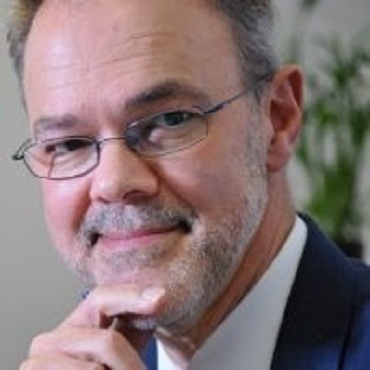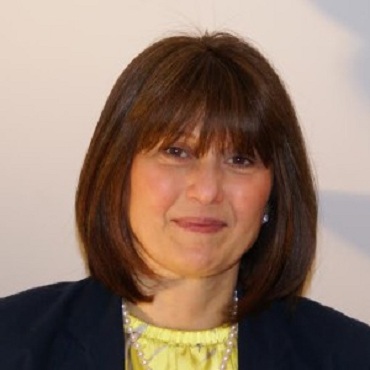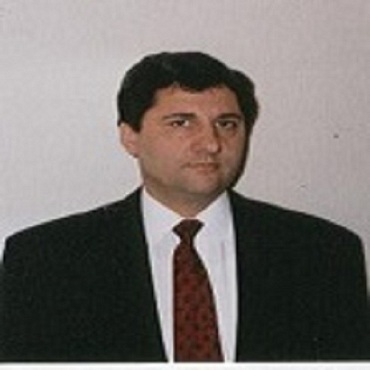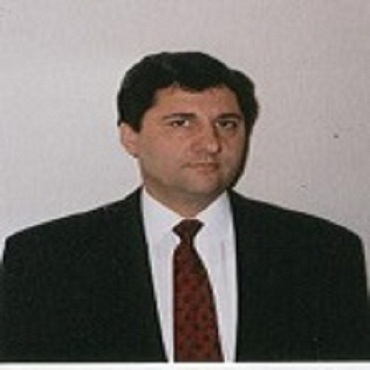
Biosimilar 2019

Theme: Biosimilars Vs. Biologics: Does accessibility ensure efficiency?
Meetings International welcomes every one of the members, experts of pharmacy, biopharmaceuticals, professors, analysts, delegates, students, business specialists and authorities from wherever all through the globe at "11th World Congress on Biosimilars and Biologics" in Miami, USA, which incorporates keynote sessions, oral talks, poster sessions distribution features, exhibition and workshops. Biosimilar 2019 is an international platform to discuss the discoveries, new developments and scopes of biologics & biosimilars.
After the successful completion of Biosimilar 2018 with the greetings of Dr. Sarfaraz K Niazi, Karyo Biologics LLC and Pharmaceutical Scientist Inc, USA, on August 20-21, 2018 at Chicago, USA; we are organizing our Biosimilar 2019 and we need your valuable suggestion and support.
Scientific Sessions:
Track 1. Biologics & Biosimilars Analytical Strategies:
Analysis of biosimilars and biologics forms to be one of the most important aspects towards the biologics and biosimilar development process. Biosimilars analytical methods for process development and validation as well as use of production technologies such as disposables and supply chain logistics can help companies establish facility flexibility.
This biosimilars global event also includes Bio analytical methods, Formulation, Bioassay for comparability and potency testing, GMP protein analysis, LC/MS analysis for discovery, preclinical, and clinical programs.
Related Conferences: European Biosimilars Congress, April 26-27, 2018 Rome, Italy; 13th International Conference on Biologics and Biosimilars, October 24-25, 2018 Boston, USA; 9th Asian Biologics and Biosimilars Congress, August 20-21, 2018 Tokyo, Japan; International Conference & Exhibition on Biologics and Biosimilars, Orlando, Florida, USA; Biologics & Biosimilars Congress, March 26-27, 2018, Berlin, Germany.
Related Societies: U.S Food and Drug Administration, USA The Biosimilars Council, USA; Association for Accessible Medicines, USA; Biosimilars Resource Center (BRC), USA; National Center for Nano science and Technology, Asia; Indian Society for Nano medicine, Asia; Nano Technology Research Association, Asia; Indian Society of Nano medicine, Asia; Medicines for Europe, Europe; British Biosimilars Association (BBA), Europe; European Medicines Agency, Europe
Track 2. Biologics VS Biosimilars:
Development of biologics is considerably more expensive and time-consuming than that of small molecules. The latter contain only carbon, oxygen and nitrogen, which are easier to synthesize with low batch-to-batch variability
Despite the high cost of development, due to their targeted nature with high efficacy, biologics are now taking on an increasingly important role in the treatment of common and/or serious diseases.
To be called a biosimilar, these compounds need to demonstrate structural and functional similarities with comparable pharmacokinetic and pharmacodynamics properties to the originator compounds using sensitive indicators, for example, levels of cytokines, blood glucose or white cell counts.
Once approved, the inherent nature of these complex molecules calls for continuing surveillance to detect allergic reactions or rare events due to immunogenicity or other untoward reactions, which may not be detectable during the development stage. Besides, the batch-to-batch variations may also lead to efficacy and safety issues in the post marketing phase.
Related Conferences: European Biosimilars Congress, April 26-27, 2018 Rome, Italy; 13th International Conference on Biologics and Biosimilars, October 24-25, 2018 Boston, USA; 9th Asian Biologics and Biosimilars Congress, August 20-21, 2018 Tokyo, Japan; International Conference & Exhibition on Biologics and Biosimilars, Orlando, Florida, USA; Biologics & Biosimilars Congress, March 26-27, 2018, Berlin, Germany.
Related Societies: U.S Food and Drug Administration, USA The Biosimilars Council, USA; Association for Accessible Medicines, USA; Biosimilars Resource Center (BRC), USA; National Center for Nano science and Technology, Asia; Indian Society for Nano medicine, Asia; Nano Technology Research Association, Asia; Indian Society of Nano medicine, Asia; Medicines for Europe, Europe; British Biosimilars Association (BBA), Europe; European Medicines Agency, Europe
Track 3. Biosimilars VS Bio betters:
Some evidence points to the fact that the first biosimilars were not as good as their branded counterparts. Whereas in case of Bio betters gain in effectiveness may come with a larger price tag, as the drug would be touted as an improvement on the current standard of treatment, and not a direct competitor in the market. This does nothing to help the cost-conscious consumer looking for cheaper alternatives. Now the question arise Biosimilars or Bio better? Accessibility & similarity or efficacy & improvement what will you choose?
Related Conferences: European Biosimilars Congress, April 26-27, 2018 Rome, Italy; 13th International Conference on Biologics and Biosimilars, October 24-25, 2018 Boston, USA; 9th Asian Biologics and Biosimilars Congress, August 20-21, 2018 Tokyo, Japan; International Conference & Exhibition on Biologics and Biosimilars, Orlando, Florida, USA; Biologics & Biosimilars Congress, March 26-27, 2018, Berlin, Germany.
Related Societies: U.S Food and Drug Administration, USA The Biosimilars Council, USA; Association for Accessible Medicines, USA; Biosimilars Resource Center (BRC), USA; National Center for Nano science and Technology, Asia; Indian Society for Nano medicine, Asia; Nano Technology Research Association, Asia; Indian Society of Nano medicine, Asia; Medicines for Europe, Europe; British Biosimilars Association (BBA), Europe; European Medicines Agency, Europe
Track 4. Biosimilars in Oncology and rare diseases:
Over the past two decades, the United States and Europe experienced a dramatic and unsustainable rise in cancer health care costs. Eight of the top ten most expensive drugs are cancer drugs, notably the novel biologic agents arising out of the recent revolution in our understanding of the genetic and molecular basis of malignancy.
The demonstration of comparable efficacy and safety to the originator is a challenge for both regulators and companies, necessitating careful pharmacovigilance following approval.
Related Conferences: European Biosimilars Congress, April 26-27, 2018 Rome, Italy; 13th International Conference on Biologics and Biosimilars, October 24-25, 2018 Boston, USA; 9th Asian Biologics and Biosimilars Congress, August 20-21, 2018 Tokyo, Japan; International Conference & Exhibition on Biologics and Biosimilars, Orlando, Florida, USA; Biologics & Biosimilars Congress, March 26-27, 2018, Berlin, Germany.
Related Societies: U.S Food and Drug Administration, USA The Biosimilars Council, USA; Association for Accessible Medicines, USA; Biosimilars Resource Center (BRC), USA; National Center for Nano science and Technology, Asia; Indian Society for Nano medicine, Asia; Nano Technology Research Association, Asia; Indian Society of Nano medicine, Asia; Medicines for Europe, Europe; British Biosimilars Association (BBA), Europe; European Medicines Agency, Europe
Track 5. Statistical approaches to quality comparability:
FDA’s guidance on comparability protocols discusses the need and considerations for assessing any product or process change that may impact safety or efficacy of a drug product or drug substance. Areas to consider may include:
• Changes to the manufacturing process
• Changes to the analytical procedure or analytical method
• Changes in manufacturing equipment
• Changes in location or manufacturing facilities
• Changes to container closure systems
• Changes in materials, concentrations, and/or formulation
• Changes in process analytical technology (PAT) or process controls
• Any change that may influence safety or efficacy of the product.
Generally, a comparability protocol includes an analytical method(s), a study design, a representative data set, and associated acceptance criteria. The defined protocol is used to demonstrate comparability. There are typically two types of data analysis techniques that are used: statistical significance and practical significance or equivalence. In the case of statistical significance, the differences are always considered to be zero. In the case of practical significance, they are not considered to be zero; however, they are considered to be so small that they are considered to be practically zero. Often, testing using statistical significance (zero change) may result in the detection of real differences that are not practically meaningful and do not identify practically meaningful differences in the product.
Related Conferences: European Biosimilars Congress, April 26-27, 2018 Rome, Italy; 13th International Conference on Biologics and Biosimilars, October 24-25, 2018 Boston, USA; 9th Asian Biologics and Biosimilars Congress, August 20-21, 2018 Tokyo, Japan; International Conference & Exhibition on Biologics and Biosimilars, Orlando, Florida, USA; Biologics & Biosimilars Congress, March 26-27, 2018, Berlin, Germany.
Related Societies: U.S Food and Drug Administration, USA The Biosimilars Council, USA; Association for Accessible Medicines, USA; Biosimilars Resource Center (BRC), USA; National Center for Nano science and Technology, Asia; Indian Society for Nano medicine, Asia; Nano Technology Research Association, Asia; Indian Society of Nano medicine, Asia; Medicines for Europe, Europe; British Biosimilars Association (BBA), Europe; European Medicines Agency, Europe
Track 6. Bioequivalence Assessment for Biologics & Biosimilars:
Bioequivalence focuses on the equivalence of release of the active pharmaceutical ingredient from the pharmaceutical product and its subsequent absorption into the systemic circulation. This session has utmost importance in context to the fact that only a suitably bioequivalent drug candidate that conforms the results in all respects to the original licensed product can be called as biosimilar drug.
Of all attempts towards developing a follow on biologics or a biosimilar drug the main detection point stands at the bioequivalence assessment. Once the bioequivalence has been obtained it can be 70% ascertained the drug qualifies to be a suitable biologics or biosimilars.
Related Conferences: European Biosimilars Congress, April 26-27, 2018 Rome, Italy; 13th International Conference on Biologics and Biosimilars, October 24-25, 2018 Boston, USA; 9th Asian Biologics and Biosimilars Congress, August 20-21, 2018 Tokyo, Japan; International Conference & Exhibition on Biologics and Biosimilars, Orlando, Florida, USA; Biologics & Biosimilars Congress, March 26-27, 2018, Berlin, Germany.
Related Societies: U.S Food and Drug Administration, USA The Biosimilars Council, USA; Association for Accessible Medicines, USA; Biosimilars Resource Center (BRC), USA; National Center for Nano science and Technology, Asia; Indian Society for Nano medicine, Asia; Nano Technology Research Association, Asia; Indian Society of Nano medicine, Asia; Medicines for Europe, Europe; British Biosimilars Association (BBA), Europe; European Medicines Agency, Europe
Track 7. Generics and Biosimilars: Industrial Strategy and Market Analysis:
Patents for several biologic blockbusters will expire in the next few years. The arrival of biosimilars, the biologic equivalent of chemical generics, will have an impact on the current biopharmaceuticals market. Five core capabilities have been identified as paramount for those companies aiming to enter the biosimilars market: research and development, manufacturing, supporting activities, marketing, and lobbying. Understanding the importance of each of these capabilities will be key to maximizing the value generated from the biologics patent cliff.
This biosimilars conference will look at the facets of current challenges in biosimilar development. This biosimilar conference will focus on multiple aspects of biosimilar product development to successfully deliver safe, potential and efficacious biologic products to the market.
Related Conferences: European Biosimilars Congress, April 26-27, 2018 Rome, Italy; 13th International Conference on Biologics and Biosimilars, October 24-25, 2018 Boston, USA; 9th Asian Biologics and Biosimilars Congress, August 20-21, 2018 Tokyo, Japan; International Conference & Exhibition on Biologics and Biosimilars, Orlando, Florida, USA; Biologics & Biosimilars Congress, March 26-27, 2018, Berlin, Germany.
Related Societies: U.S Food and Drug Administration, USA The Biosimilars Council, USA; Association for Accessible Medicines, USA; Biosimilars Resource Center (BRC), USA; National Center for Nano science and Technology, Asia; Indian Society for Nano medicine, Asia; Nano Technology Research Association, Asia; Indian Society of Nano medicine, Asia; Medicines for Europe, Europe; British Biosimilars Association (BBA), Europe; European Medicines Agency, Europe
Track 8. Clinical trials of Biologics & Biosimilars:
Biologic trials require a customized approach based on the therapeutic indication and study specific goals. The CRO must work with the sponsor to develop an effective plan and execution strategy for these study types that includes subject recruitment, regulatory, clinical safety monitoring, specialized pharmacy expertise, and bio analytical support while ensuring subject safety throughout the entire trial. This is best accomplished with a detailed risk assessment to ensure all the bases are covered. The risk assessment isn’t just done once and then forgotten, but is a living document that is updated as new information about the molecule is gathered.
Related Conferences: European Biosimilars Congress, April 26-27, 2018 Rome, Italy; 13th International Conference on Biologics and Biosimilars, October 24-25, 2018 Boston, USA; 9th Asian Biologics and Biosimilars Congress, August 20-21, 2018 Tokyo, Japan; International Conference & Exhibition on Biologics and Biosimilars, Orlando, Florida, USA; Biologics & Biosimilars Congress, March 26-27, 2018, Berlin, Germany.
Related Societies: U.S Food and Drug Administration, USA The Biosimilars Council, USA; Association for Accessible Medicines, USA; Biosimilars Resource Center (BRC), USA; National Center for Nano science and Technology, Asia; Indian Society for Nano medicine, Asia; Nano Technology Research Association, Asia; Indian Society of Nano medicine, Asia; Medicines for Europe, Europe; British Biosimilars Association (BBA), Europe; European Medicines Agency, Europe
Track 9. Intellectual Property Rights and Regulatory Approaches for Biosimilars:
The EU has pioneered the development of a regulatory system for biosimilar products. To date the EMA has approved nineteen biosimilars for use in the EU including the recent landmark approval of monoclonal antibodies.
The US biosimilar pathway was signed into law in March 2010 as part of the Affordable Care Act. The US Food and Drug Administration (FDA) issued three draft guidance documents in February 2012 on biosimilar product development to assist industry in developing such products in the US. As these regulations will undergo further review and revision by the FDA, the US remains behind the EU, Latin America and Asia in terms of biosimilar drug development and commercialization.
The Biologics Price Competition and Innovation Act (BPCIA) opened the door for companies to seek FDA approval to manufacture and sell biosimilar or interchangeable versions of brand name biological products. The BPCIA also provides reference product sponsors with 12 years of market exclusivity, but unlike the Hatch-Waxman Act, it does not require reference product sponsors to list patents in an Orange Book equivalent and does not include an automatic 30-month stay of FDA approval upon the timely filing of a lawsuit. The BPCIA, however, does provide pre-litigation procedures for the parties to follow, including identification of relevant patents and each party’s basis for infringement and invalidity.
Related Conferences: European Biosimilars Congress, April 26-27, 2018 Rome, Italy; 13th International Conference on Biologics and Biosimilars, October 24-25, 2018 Boston, USA; 9th Asian Biologics and Biosimilars Congress, August 20-21, 2018 Tokyo, Japan; International Conference & Exhibition on Biologics and Biosimilars, Orlando, Florida, USA; Biologics & Biosimilars Congress, March 26-27, 2018, Berlin, Germany.
Related Societies: U.S Food and Drug Administration, USA The Biosimilars Council, USA; Association for Accessible Medicines, USA; Biosimilars Resource Center (BRC), USA; National Center for Nano science and Technology, Asia; Indian Society for Nano medicine, Asia; Nano Technology Research Association, Asia; Indian Society of Nano medicine, Asia; Medicines for Europe, Europe; British Biosimilars Association (BBA), Europe; European Medicines Agency, Europe
Track 10. GMP, GCP, QC & R&D:
Good Manufacturing Practice is that part of quality management which ensures that products are consistently produced and controlled according to the quality standards appropriate to their intended use and as required by the marketing authorization, clinical trial authorization or product specification. Good Manufacturing practices aims at both production and Quality Control. Fact about Current Good Manufacturing Practices (cGMP) is aimed primarily at managing and minimizing the risks inherent in pharmaceutical manufacture to ensure the quality, safety and efficacy of products. Over the previous decade, a developing offer of the business' R&D yield has comprised of incremental enhancements to existing generic medications instead of new sub-atomic substances. Execution measures that consider just altogether new medications, for example, the quantity of NME endorsements every year miss that move and underestimate the business' R&D Field
Related Conferences: European Biosimilars Congress, April 26-27, 2018 Rome, Italy; 13th International Conference on Biologics and Biosimilars, October 24-25, 2018 Boston, USA; 9th Asian Biologics and Biosimilars Congress, August 20-21, 2018 Tokyo, Japan; International Conference & Exhibition on Biologics and Biosimilars, Orlando, Florida, USA; Biologics & Biosimilars Congress, March 26-27, 2018, Berlin, Germany.
Related Societies: U.S Food and Drug Administration, USA The Biosimilars Council, USA; Association for Accessible Medicines, USA; Biosimilars Resource Center (BRC), USA; National Center for Nano science and Technology, Asia; Indian Society for Nano medicine, Asia; Nano Technology Research Association, Asia; Indian Society of Nano medicine, Asia; Medicines for Europe, Europe; British Biosimilars Association (BBA), Europe; European Medicines Agency, Europe
Track 11. Current Challenges in development of Biosimilars:
Over the past ten years, regulatory authorities worldwide have been focusing on developing guidelines for biosimilars. However, until a global development strategy is adopted, regulatory, therapeutic and legal challenges remain. While the prospect of cost savings and efficiency make the biosimilar market attractive, companies and their outsourcing partners planning to enter this market must be aware of current regulations and issues in the global marketplace and be prepared to respond quickly to changes.
As global regulations and guidelines progress, questions such as the following are broadly being debated in the pharmaceutical industry:
- Should interchangeability and automatic substitution be allowed?
- Should biosimilars have the same international non-proprietary name as the reference product?
- How much longer will patent litigation hinder the U.S. market?
In countries without biosimilar guidelines, interaction with regulators can be challenging. It is advisable to approach agencies proactively for scientific advice to avoid potential questions and delays in clinical trial approval. In most cases, reviewers need to be guided through the FDA, EMA and PMDA (Japan) guidelines. This is important in order to receive agency validation of the development program, discuss issues, identify gaps in the submission package, review the protein characterization steps conducted, agree on the source of the reference product and familiarize the assessors with the biosimilar product before submitting clinical trial applications.
Related Conferences: European Biosimilars Congress, April 26-27, 2018 Rome, Italy; 13th International Conference on Biologics and Biosimilars, October 24-25, 2018 Boston, USA; 9th Asian Biologics and Biosimilars Congress, August 20-21, 2018 Tokyo, Japan; International Conference & Exhibition on Biologics and Biosimilars, Orlando, Florida, USA; Biologics & Biosimilars Congress, March 26-27, 2018, Berlin, Germany.
Related Societies: U.S Food and Drug Administration, USA The Biosimilars Council, USA; Association for Accessible Medicines, USA; Biosimilars Resource Center (BRC), USA; National Center for Nano science and Technology, Asia; Indian Society for Nano medicine, Asia; Nano Technology Research Association, Asia; Indian Society of Nano medicine, Asia; Medicines for Europe, Europe; British Biosimilars Association (BBA), Europe; European Medicines Agency, Europe
Market Research Report
Introduction:
The global biosimilars market is expected to reach USD 10.90 Billion by 2021 from USD 3.39 Billion in 2016, at a CAGR of 26.3% during the forecast period. The major factors driving the growth of this market are the increasing demand for biosimilar drugs due to their cost-effectiveness, growing pressure to curtail healthcare expenditure, rising geriatric population, strategic collaborations resulting in enhanced productivity and clinical trial activities for biosimilars, and increasing government support and initiatives to develop and promote biosimilars.
On the basis of product,
The biosimilars market is segmented into recombinant non-glycosylated proteins, recombinant glycosylated proteins, and recombinant peptides. In 2018, the recombinant non-glycosylated proteins segment is expected to account for the largest share of the market. New product launches, cost-effectiveness, growing incidence of diabetes, and presence of many biosimilar versions of insulin in the pipeline are the factors driving the growth of this segment.
Based on manufacturing type
The biosimilars market is segmented into in-house manufacturing and contract manufacturing organizations. In 2018, the contract manufacturing segment is expected to account for the largest share of the market
Based on application, the biosimilars market is segmented into oncology, blood disorders, chronic and autoimmune diseases, growth hormone deficiency, infectious diseases, and other applications. The oncology segment is expected to grow at the highest CAGR during the forecast period. The rising incidence of cancer, high cost of biologics, pressure to reduce healthcare expenditure, and low cost of biosimilars are factors contributing to the growth of this segment.
Based on region, the global biosimilars market is segmented into North America, Europe, Asia, and RoW. Asia is expected to grow at the highest CAGR during the forecast period. This can be attributed to factors such as the low per capita consumption, rapid growth in economies, rise in technological innovation, trade links, and the rise in medical tourism.
The key players in the biosimilars market include Pfizer Inc. (U.S.), Sandoz International GmbH (Germany), Teva Pharmaceuticals Industries Ltd. (Israel), Amgen Inc. (U.S.), Biocon Ltd. (India), Dr. Reddy’s Laboratories (India), F. Hoffmann-La Roche Ltd. (Switzerland), Celltrion Inc. (South Korea), and Samsung Bioepis (South Korea).
American Market: USA is a largest market of biologics globally. With the approval of the first biosimilar in the U.S in early 2015 and the expected patent expiration of 12 biologics by 2020, biosimilars are expected to competitively penetrate the biologic's market.
In 2010, patient care act was passed by Obama which give licensure pathway for interchangeable products, which provided under the part of Biologics Price Competition and Innovation Act for the product demonstrating as biosimilar, manufacturers need to submit
Biologics License Application (BLA). Target reference products for the USA market are Monoclonal Antibodies (MAbs), recombinant protein and some high-purity protein products, out of which recombinant therapeutic with large market (sales) even with small profitable amount.
Biosimilar market is expected to represent CAGR of 62.2 % as the chances of growth of biosimilar market from $1.7 billion in 2014 to $30 billion by 2020.
Biosimilars will account for 4% to 10% of the biologics market total by 2020, depending on the number of biosimilars launched in the U.S. The U.S. is the largest market for biologics and the biosimilars can achieve 10% of the global sales in 2020, only if the volume growth for biologics is achieved in the U.S. market.
The main players looking to penetrate the US biosimilar market are currently Amgen, Mylan, Pfizer, Sandoz and Hospira.
Global Biosimilar Market
While the U.S. has approved only one biosimilar therapeutic; Japan, Australia and Europe have approved six, eight and 19 biosimilars respectively. Already, biosimilars have an exemplary safety track record in the E.U., Japan, and Canada where biosimilars are regularly competing against biologics for nearly seven years. The E.U. was the first geographic market to develop the process of authorization of biosimilars, setting an example for many other developing markets to follow suit. As of 2015, the E.U. has approved 19 biosimilars, out of 21 submissions, mostly for three reference biologics such as Somatropin, Epoetin alfa and Filgrastim.
Biosimilars generated revenues of $1.1 million in 2007 and gradually rose to $86.9 million in 2014. During this period, the market penetration of biosimilars in Europe and emerging markets was only about 8%. The top five biologics targeted most by biosimilar developers are Avastin, Enbrel, Herceptin, Humira and Rituxan, which together generate revenues of about $50 billion annually.
Biosimilar market in Europe:
Patent expiration and increased use of traditional generic drugs are leading to a shift of focus in the pharmaceutical industry toward investment in specialty drugs and high growth areas such as biosimilars in Europe. patent expiry of key product classes and a growing emphasis on cost effectiveness are making governments switch to affordable alternatives.
The EMA approved four additional biosimilars in 2016, including three biosimilars in two new product classes: a biosimilar of Amgen’s Enbrel (etanercept) and two biosimilars of Sanofi’s Clexane (enoxaparin sodium). Etanercept is a fusion protein used to treat a variety of autoimmune disorders and enoxaparin sodium is a low-molecular weight heparin indicated for preventing blood clots. These additional approvals bring the total of currently authorized biosimilars in Europe to 22 and the product classes to eight
It was estimated that in 2015, Europe accounted for the largest market share of the global biosimilars market, followed by Asia Pacific.here is thus a tremendous opportunity for biosimilar manufacturers. However, the development of biosimilar drugs is riddled with complexities, from R&D to manufacturing to marketing, and is one of the most expensive propositions in the pharmaceutical industry.
About 30 companies are actively developing biosimilar medicines and are researching on the biosimilar versions of 16 distinct molecules that will lead to greater competition by 2020, with 8 major biologic medicines expected to lose exclusivity by 2020.
The next five years are going to be an interesting period in the biosimilars market as a number of biologic drugs are going to lose their exclusivity.
Asia pacific: Asia-Pacific is the fastest growing market for biosimilars because of low manufacturing expenses, availability of skilled and cheap labour, lenient regulations laid by governments. In fact, governments are encouraging the use of biosimilars. For example, the government of India provides various necessary and regulatory procedures for the usage of biosimilars products.
Asia-Pacific Biosimilars Market was worth $0.78 billion in 2016 and estimated to be growing at a CAGR of 39%, to reach $4.05 billion by 2021.
Based on geography the Asia-Pacific market is segmented into various regions namely Japan, China, India and Australia.
India and China are estimated to grow the fastest. Other countries such as South Korea are also expected to record high growth over the next five years. India is one of the largest hubs for the biosimilar industry and observes a presence of over 30 leading firms that operate in the development of biosimilars, some of which include Dr Reddy’s Laboratories, Wockhardt, Lupin, Cipla, Avesthagen, Biocon, and Zydus Cadilla.
Some of the major players in the biosimilars market in Asia Pacific:
- Sandoz International GmbH
- Wockhardt Ltd
- Hospira, Inc.,
- Teva Pharmaceutical Industries Ltd.
- Dr. Reddy’s Laboratories,
- Biocon Limited,
- Mylan, Inc.,
- Zydus
- Cadila,
- Celltrion Inc.,
- Roche Diagnostics
Middle East: The Middle East and Africa Biosimilars Market was worth $0.37 billion in 2016 and estimated to be growing at a CAGR of 32%, to reach $1.63 billion by 2021.
Biosimilars are rising as a standout amongst the most vital area in the medicinal services industry. With expanding social insurance costs, biosimilars are being looked upon as a moderate treatment alternative. Developing economies are watching far reaching development in biosimilars industry from requesting clinical necessities of therapeutics. Ascend in GDP and human services consumptions, and the interest for practical therapeutics arrangement has brought about the development of this market
Conclusion: Like most other markets, a competitive biologics market can offer benefits to consumers by lowering prices and enhancing quality. In addition, biosimilars have an unblemished safety track record in the E.U., where biosimilars have been competing against biologics since 2006. Biosimilars have also proved to have a notable impact on drug prices. In the E.U., where biosimilars are already competing with biologics, biosimilars are sold at a 30% discount compared to branded biologic drugs.
Though biosimilars industry face many challenges like Patent and Legal Issues, Production Bottlenecks, Pricing Issue, Regulatory issues and lack of awareness.
In spite of the approval of 21 biosimilars in Europe, only 18% of the physicians are aware of these similar versions of biologics. However bisimilar industry seems to have a bright future as an alternative to patent biologics.
References:
https://www.biosimilardevelopment.com/doc/biosimilars-market-europe-forecast-to-0001
https://www.biologicsblog.com/biosimilars-europe-2016-year-review-whats-ahead
http://www.marketdataforecast.com/market-reports/asia-pacific-biosimilars-market-1145/
https://en.wikipedia.org/wiki/Biosimilar
https://www.investopedia.com/news/top-4-challenges-biosimilar-growth-amgn-nvs/
Biosimilar 2018 Report
Meetings International successfully anchored its leading "World Biosimilars Conference" slated on August 20-21, 2018 at Chicago, USA.
Biosimilar 2018 is distinguished with the attendance of Editorial Board Members of supported Journals, Scientists, young and brilliant researchers, business delegates and talented student communities representing more than 25 countries, who made this conference rewarding and fecund.
Our International Meeting on World Biosimilars Conference was based on the theme “New Inventions in Biosimilars” which has encrusted the below
Scientific sessions:
- Biosimilars- Hatch-Waxman Act & BPCI Act
- Challenges in Developing Biosimilars
- Current Developments in the Field of Biosimilars
- Emerging Trends in Biosimilars
- Cost Analysis of Biosimilars
- Clinical Studies on Biosimilars
- Innovative Approach for Biosimilars
- Consequences of Brexit on Biosimilars
- Biosimilars Market- Challenges & Prospects
- Globalization of Biosimilars
- Intellectual Property Rights
- US-FDA Approved Biosimilars
- Biosimilars Approved in Europe
- Biosimilars in Cancer Therapy
The conference was initiated and embarked with an Opening Ceremony followed by a series of lectures delivered by members of the Keynote forum and Speakers. The peerless people who promulgated the theme with their exquisite talks were:
- Sarfaraz K Niazi, Karyo Biologics LLC and Pharmaceutical Scientist Inc, USA
- Ronald P Dudek, Lentigen Technology Inc., USA
- José Carlos Ferreyra López, President, Instituto de Investigación e Innovación Farmacéutica, Mexico
- Milind Antani, Nishith Desai Associates, India.
- Joel I. Osorio, Chief Executive Officer / Founder, Regenerage, Mexico.
- Rafiq Islam, Celerion Inc., USA
- Roberto Valenti, DLA Piper, Italy
- James Stout, BioVectra Inc, Canada.
- James M Sulzberger, Downstream Purification Scientist, Bio Rad Laboratories, USA
- William Rushton Process chromatography support scientist, Bio Rad Laboratories, United States.
- Sandra Simic, Ewopharma, Croatia.
- Yazan Shaban, Hikma Pharmaceuticals, Jordon
- Aaron D Barzey, ADB Medical, UK
- Ismaeil Saad, Theodore Bilharze research Institute, Egypt
Meetings International wishes to acknowledge with its deep sincere gratitude to all the supporters from the Editorial Board Members of our Open Access Journals, Keynote speakers, Honorable guests, Valuable speakers, Poster presenters, students, delegates and special thanks to our Exhibitor Mobius Analytics, Collaborator European Nanoscience and Nanotechnology Association (ENNA), Media Partners (Tabeeby, enliven, Kind Congress, Conferize, Classified 4 Free and Nature events directory) for their promotion to make this event a huge success.
For past conference website kindly follow this link:
https://www.meetingsint.com/conferences/biosimilar/2018
Biosimilar Conference | Biosimilars Conference | Biosimilar 2018 | Biopharmaceutical Conference | Pharmaceutical Conference | USA Conference | Chicago Conference
For more details about Biosimilar 2018,
Please Visit: https://www.meetingsint.com/conferences/biosimilar/2018
- Application of Nanotechnology in Biologic Drug Development
- Biologics & Biosimilars: Analytical Strategies
- Biologics Vs Biosimilars
- Biosimilars Vs Bio-betters
- Generics and Biosimilars: Industrial Strategy and Market Analysis
- Drug development for Rare Diseases
- Clinical Trials of Biologics & Biosimilars
- GMP, GCP, QC & R&D
- Sustainability of the Biologics & Biosimilar Medicines Sector
- Novel Drug Delivery Technologies
- Journal of Biomedical Sciences
- British Biomedical Bulletin
11 Organizing Committee Members
12 Renowned Speakers
Markus Fido
CEO VelaLabs GmbH
Austria
Peter Hans Kalinka
Chairman and Principal Consultant
Longmore 60 Biotech Inc.
USA
Sandra Simic
Biogen Biosimilars Team Leader,Ewopharma
Croatia
Sabiruddin Mirza
Harvard University
USA
Joel Garcia
Bioquark, Inc
USA
MOHAMMAD HOJOUJ
Dnepropetrovsk Medical Academy
Ukraine
Jose Carlos Ferreyra
President, Pharmaceutical Institute (Instituto Farmaceutico, A.C.)
Mexico
Candida Fratazzi
Founder & President,
Boston Biotech Clinical Research
USA
Moustafa Magdy
Regional Marketing Manager,
Allergan
UAE
Michel Mikhail
International Expert in Biosimilars & Regulatory Affairs, BioNTech AG
Germany
Aaron Barzey
ADB Medical
UK
Hareesh Parandhaman
Founder, Win with Biosimilars
India












































































































































